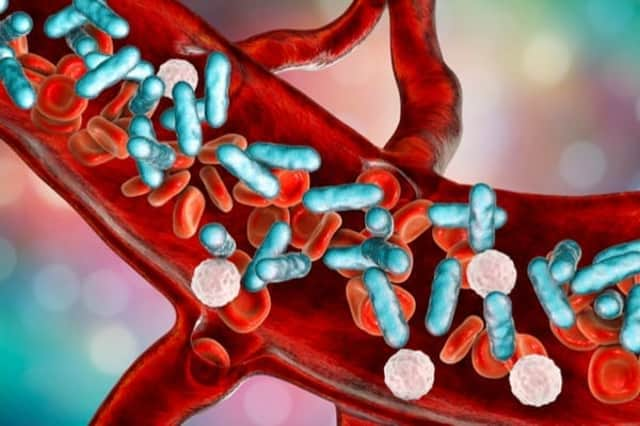These are the common signs and symptoms of sepsis that you need to know about


Sepsis is a serious condition that can be fatal if it isn’t spotted and treated quickly. But what causes sepsis and what are the common signs and symptoms?
What is sepsis?
Sepsis is a serious complication of an infection and, without quick treatment, it can lead to multiple organ failure and death.


Advertisement
Hide AdAdvertisement
Hide AdSepsis can be triggered by an infection in any part of the body, with the most common sites being the lungs, urinary tract, abdomen and pelvis.
What causes sepsis?
Your immune system usually keeps an infection limited to one place, known as a localised infection, but if your immune system is weak or an infection is particularly severe, it can quickly spread through the blood into other parts of the body.
This then causes the immune system to go into overdrive and the inflammation then affects the entire body.
Everyone is potentially at risk of developing sepsis from minor infections, but some people are more at risk of sepsis, including:
Advertisement
Hide AdAdvertisement
Hide Adbabies younger than 1 yearpeople over 75people who are frailpeople with diabetespeople with weak immune systemspeople who are having chemotherapy treatmentwomen who have just given birth or recently been pregnant (including those who have had a miscarriage or abortion)people who have recently had surgerypeople who have recently had a serious illness
Sepsis is also a particular risk for those already in hospital because of another serious illness.
What are the common signs and symptoms of Sepsis?
Sepsis symptoms in babies and children
If your child has any of these symptoms, go straight to A&E or call 999:
looks mottled, bluish or paleis very lethargic or difficult to wakefeels abnormally cold to touchis breathing very fasthas a rash that does not fade when you press ithas a fit or convulsion
Sepsis symptoms in older children and adults
Early symptoms of sepsis may include:
Advertisement
Hide AdAdvertisement
Hide Ada high temperature or a low body temperaturechills and shiveringa fast heartbeatproblems or changes to your breathingfeeling or acting differently from normal – you do not seem your usual self
Many of the symptoms of sepsis are also associated with meningitis. The first symptoms of meningitis are often fever, vomiting, a headache and feeling unwell.
Sepsis is also a particular risk for those already in hospital because of another serious illness (Photo: Shutterstock)
Can sepsis be treated?
If sepsis is detected early and has not yet affected vital organs, it might be possible to treat the infection at home with antibiotics. Most people who have sepsis detected at this stage make a full recovery.
Advertisement
Hide AdAdvertisement
Hide AdHowever, almost all people with severe sepsis and septic shock require admission to hospital, and some people may require admission to an intensive care unit.
As sepsis can cause problems with vital organs, those with severe sepsis are likely to be extremely ill and in some cases, the condition can be fatal.
However, the condition is treatable if it's spotted and treated quickly, and most cases lead to a full recovery with no lasting problems.
For more information or advice about sepsis, visit nhs.uk/conditions/sepsis
This article originally appeared on our sister site, Yorkshire Evening Post